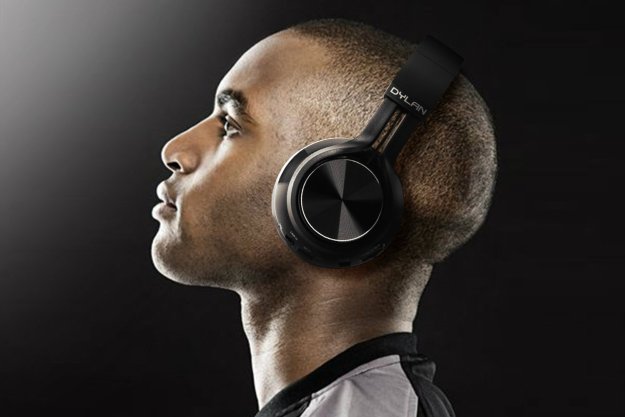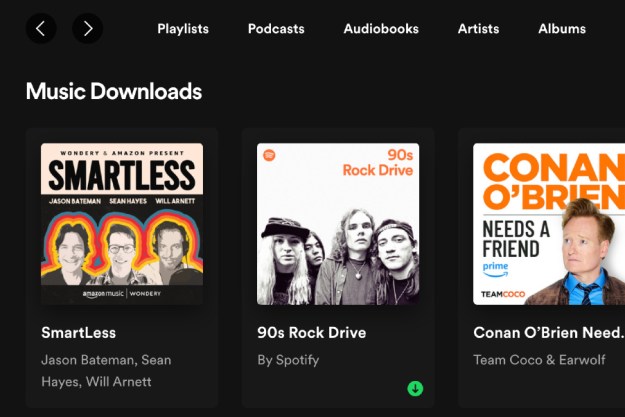Some men go on quests (see Bilbo Baggins, Jon Snow, Alan Quatermain, et al), and others go on journeys. In the latter category falls Matisyahu, the noted Jewish reggae/hip-hop beatboxer who’s recently taken live improv to another level in his newly reborn, clean-shaven, and literally less Orthodox incarnation.
Having been recently freed from major label constraints, Matisyahu and his ace jam band have since put their full energy behind the eight free-form/free-flowing tracks that comprise Undercurrent , out now in various formats via Fallen Sparks/Thirty Tigers.
“The record unfolds as a reflection on some past ideas, and then it moves forward on other ones where I left off,” Matisyahu told Digital Trends. “It’s done in eight moments, as eight songs. The first track, Step Out Into the Light, is a celebration of the spiritual search a person might go through — a celebration of the searching, the yearning, the reaching, and being on the go.”
Matisyahu continued, “The second song, Back to the Old, is more about reflection and returning to the water — returning to some prior state, but in a new place. It’s a balance for someone who’s on a spiritual search and constantly yearning for what’s beyond. But then there’s the realization that, at some point, what is beyond is not as relevant as what it is that’s right in front of you.”
Digital Trends called Matisyahu (born Matthew Paul Miller) while he was on a brief tour sabbatical in New York to discuss how Undercurrent was born out of live improv jams, why his beatboxing is like making a live demo, and how the way the album unfolds on vinyl resembles Noah’s Ark. As the man himself testifies in Back to the Old, “All I got is what’s right in front of me.”
Digital Trends: Where do you feel you’re at as a songwriter in a year that’s as polarizing as 2017 is?
Matisyahu: I’ve always been more about my personal philosophies, my ideas, and my journey, so while I’m definitely affected by a world that’s so politicized, I try to have as little of that show up in my work as possible. I might make little references here and there, but the general rule is, it’s more about my journey through it all.
People are all on different journeys, but for me, the music is always emboldened with my journey through religion, through systematic existentialism and philosophy, through Kabbalistic insights and being religious, and then my breakaway from all of it. All of those things are a very in-depth process I’ve chronicled.
Do you feel working on Undercurrent was more freeing for you on the creative side because you didn’t have certain outside forces weighing on you while you were in Studio G in Brooklyn making the album?
“The cool thing about beatboxing is I don’t have to go sit down at a drum set, I can just start cracking it out.”
Ummm, yeah, I think so. Absolutely. I think it’s important to understand what most people are capable of as artists. It was more about creating the music 100 percent for the sake of the music, without any kind of approach to it for commercial reasons, really.
This type of music is for if you want to put it on for a run or a drive, or a long walk. This is the sort of backdrop you listen to. It’s almost like a cinematic soundtrack type of thing.
It is very cinematic in its approach, I agree. Was it all done live, with everybody looking at each other while you were cutting it?
Yeah, we had a pretty intensive process. We came right off tour, playing every night together and recording the improvisations we were doing live. And we went right into the studio, into our rehearsal space for about a month with those eight songs we worked on. We recorded them in Studio G over the course of about 10 days — and that was done without any vocals, so they were all made first as instrumentals.
Later, I went back and put on the vocals. It was all done back to back. There wasn’t a lot of downtime or drawn-out time in between sessions, which was nice.
Did you write out any of the lyrics first, or did they flow off the top of your head while you listened to the live tracks?
By the time we got to the studio to record the live improvs, I had some idea. It was done live, but there was some direction as to which way the music was going.
Lyrically, I have notes and things I’ve written down over the course of a few years — stuff I’ve written down in between records — and then I’ll gather them all together until I have the bed of a song. In this case, it was the entire bed of the song. And then I go through what I’ve written and I’ll rewrite them into songs, instead of them just being “ideas.”
“Ancient melodies come back to me now,” as you say on Step Out Into the Light. You’re doubling your vocals at the beginning of that one, right? You do that a few times throughout the record, in fact. How do you decide when to do that?
When I record vocals, I usually put doubles down with my lyrics, and then sometimes I’ll triple them, or do them four or five times. Eminem was about the first hip-hop artist who preferred to stack his vocals like that on top of each other, to create this kind of stereo effect. Sometimes I like to have that, sometimes not. Sometimes it’s just one vocal if the lyrics are very sensitive, and you don’t want to bang multiple vocals on top of it, because that will take away from the subtlety of the emotion, so you go with one single voice.
But sometimes, you want to add on the effects. For example, in BSP: Blue Sky Playground, there’s a section where I drop down an octave. When we got the mix back, the mixing engineer had put a really cool effect on it, but in the end, I really liked having no effect there, and just have the lower octave without it going to an effect. Sometimes you make that decision when you’re listening back to the mix. It’s a decision that’s made as it’s happening.
On Driftin’, I love how your signature beatboxing takes over the second half of the song.
Yeah yeah, that’s me. That’s one of the things that happens live. Over the years, it became less of a “this is a cool little trick I can do for 3½ minutes” thing, and more of a way I can translate my musical ideas to the band while we’re performing.
“Painters are not required to paint the same thing every night.”
If the band is doing something and I feel like I wanna shift it, I’ll start beatboxing, and that will require the musicians to listen to the rhythm and the bass of whatever I’m playing. Then we’ll interact musically, where I’m able to get us into a whole different dynamic and a whole different zone.
And that’s what I tried to do with this record. I wanted to have that on there someplace, because a lot of times we’ll take the beatboxing out if the tune itself shifts into other places, and we’ll just have the music there. But for Driftin’, we kept it in there, which is what keeps it going. We actually cut about eight minutes off of that version of Driftin’ you hear on the album.
When you’re beatboxing like that, you’re doing a literally live demo for how you want something to sound.
That’s exactly right. That’s how I want the beat to swing, and to sway. And that’s the cool thing about beatboxing — I don’t have to go sit down at a drum set. I can just start cracking it out.
We’re also getting Undercurrent on two 180-gram LPs, right?
Oh yeah, and the way it breaks up on each side makes a lot of sense. It almost works as a two song-by-two song thing, and you just listen to it a side at a time.
Each pairing is like two sides of a conversation, two by two — which is almost like Noah’s Ark, though that may be a different story.
Well, that’s kind of a cool concept, actually. There are passages in Step Out Into the Light that are all about the water, and I also have this lyric in there: “In these verbs in these nouns / in these words build a boat / take me through the stormy seas.”
So there was a concept there you just picked up on — that the words create an ark that takes a person through their stormy seas.
Very cool. You mentioned how Undercurrent songs evolved out of live improvs. I have to imagine older songs of yours like Jerusalem [one of the big hits from his 2006 studio album, Youth] feel differently now to you onstage than they did back then. They have to.
The thing is, you gotta try for an original sound you can take with you through the history of a song. Like a person who goes through evolutions and changes, there’s always some kind of thread that keeps it tied to that. As long as you can hold onto that thread so people feel the connection to the tune, then you can reshape, reform, and recreate the entire song, which is part of what I’ve done.
I mean, painters are not required to paint the same thing every night. It’s a weird thing, and of course I understand it — you want to hear those songs live, the one you first kissed your girlfriend to in that car. All those songs have relevance, and it’s nice to hear them live.
But for me, what I do is to completely deconstruct them and even bring lyrics together, ones that have similar references. I’ll pull different lyrics together in the moment from three or four different songs I feel are all connected. It’s cool, because you get to play with your art in a way maybe other people can’t. You get to recreate it all the time.
As an artist, you’re looking at a body of work done over a period of years, and there’s a thread between what you wrote then and what you’re writing now. It shows how you’ve evolved over time — and you should be “allowed” to evolve, by the way.
People sometimes think when an artist becomes “known,” they’ve already evolved, and have their “thing” down — which to some extent is true, if your art is on a pretty advanced level and your peers are hearing that together, and if their soundwaves are making it across the universe.
By the time you reach the Driftin’ part of this journey, do you feel you’ve come to the end of this chapter, and the next one’s going to be different?
That’s a really good question. Sometimes you make a record and you’re already thinking about the next one, and you’ve already got ideas for it. I do have some ideas already.
One of the cool things about this record is it wasn’t created years ago, took years and years to make, and then took months and months to get out. It was just like when I put out Live at Stubb’s (2005) — it was only 3 or 4 months after it happened, and that’s the same case here.
This record was recorded in the fall, and it came out in the spring. I feel pretty relevant, and pretty real about where I’m at right now. But I’m not sure what the next chapter is going to be, to be really honest with you.





